Russian submarine fleet (part 4)
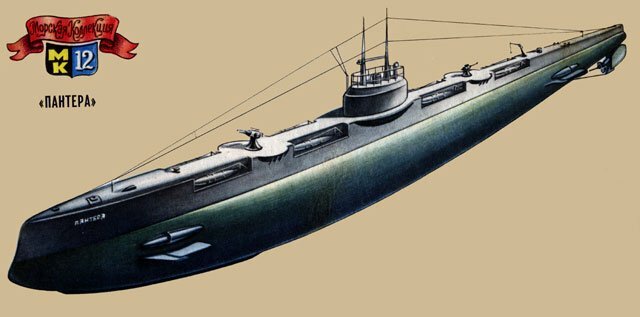
PL PANTERA OPENS BATTLE ACCOUNT
After the capitulation of Germany in the Gulf of Finland, a British squadron appeared. It was clear that with the start of 1919 navigation, the invaders would undertake military provocations in the Baltic.
On November 15, 1918, a bunker was established (the current Baltic squad fleet), which included 2 battleships, one cruiser, 4 destroyers and 7 submarines - Panther, Tiger, Lynx, Boar, Wolf, Tour and Jaguar.
The submarine, despite the stormy weather and low air temperature, which caused icing of the hulls, the failure of the periscopes, and often weapons, conducted systematic reconnaissance actions.
The first such trip was made by the Submarine Tour (commander N.А.Kol, commissioner I.N.Gaevsky). At dawn 28 November, she secretly penetrated the Revel raid and was there in a submerged position until 11 hours of the day. With scouting purposes, the submarine Tigr and Panther also went to sea. However, severe frosts every day more and more ice-shackled the eastern part of the Gulf of Finland. Swim was getting harder and harder. In December, the icebreakers for three days took from Petrograd to Kronstadt submarine "Tour", which was supposed to be sent to distant reconnaissance to Libau. Submarine "Jaguar" and minesweeper "Whaler" were overwritten with ice in the Marine Channel.
December 30 stuck in the ice on the Grand Kronstadt raid submarine "Tiger". More than 20 steamers and even icebreakers were overwhelmed with ice on the Neva and the Sea Channel. Therefore, the outlets to the submarines were temporarily stopped. In January, the submarine "Panther" was leaving 1919 in Narva Bay. This was the last winter hike of the submarine.
In the spring of 1919, the Entente and the Russian counter-revolution undertook a new campaign against Soviet Russia, in which the White Guard armies played the main role. In May, General Yudenich’s troops launched an offensive against Petrograd: May 15 was captured by Gdov, May 17 - Yamburg (Kingisepp), May 25 - Pskov.
At a meeting of the Council of Workers 'and Peasants' Defense 19 in May, Lenin signed a draft resolution on the rush to repair the ships of the Baltic Fleet.
15 battleships, one cruiser, 3 destroyers, 10 PL, 7 minelayer, 3 patrol ships and transports were included in the current squad formed by 6 mats. On April 11, another submarine mine barrier "Yorsh" entered DOT. But some of these ships were still under repair.
They entered service only a few months later. In early July, the Red Army launched an offensive near Petrograd. He tried to prevent the British warships, carrying out a systematic shelling of the seaside flank of the Red Army troops. The submarines took an active part in the fighting against the interventionists. Baltic Fleet.
On July 10, the submarine "Wolf" headed for Koporsky Bay (commander N. M. Kitayev, commissioner A. A. Dobrozrakov). At the exit from Kronstadt, one of the electric motors was burned on it. But the commander and commissioner decided to continue the march. In the Gulf divers discovered 3 enemy destroyers. Two ships were on the move. Attacking them with one working propeller motor submarine failed. The third destroyer stood under the coast, and it was also impossible to get close to him because of the shallow water at a submerged position at a distance of a torpedo shot. At midnight, the submarine "Wolf" left Koporsky Bay.
The submarine "Panther" (commander A.N. Bakhtin, commissioner V.G. Ivanov) acted most actively in those days. On the morning of July 24, she, following the periscope, found in the Koporsky Bay two British submarines of type "E", which were on the surface. AN Bakhtin, deciding to attack both submarines simultaneously, sent the Panther between them. When the distance to the 6 cable was shortened to one of the enemy submarines, the Panther fired a shot from the right stern torpedo tube, and 4 minutes later, turning it to the right by 20, fired the torpedo from the left stern to the second submarine. But for some reason there were no explosions. One of the British submarines made a move, the other remained in place. Describing the circulation to the left under water, the Panther submarine fired two torpedoes from the nasal apparatus at a fixed target. Torpedoes went well, but the enemy noticed their trail. The British submarine made a move, turned around, and both torpedoes passed by.
At this point, another British submarine managed to shoot a torpedo, which passed along the side of the submarine "Panther". The Soviet boat, turning to the right, went to the depths.
It was the first torpedo attack. Performed by the submarine of the Baltic Fleet during the Civil War. She showed the enemy that the Soviet submariners are a very real and serious threat.
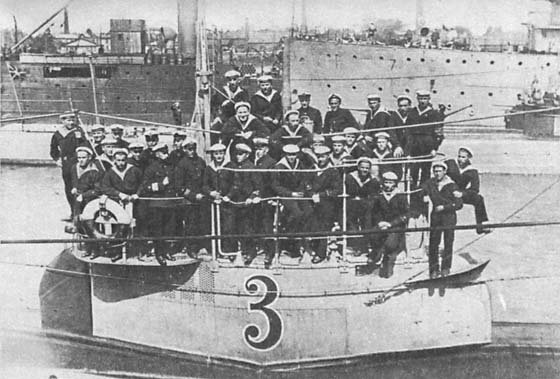
At midnight on July 27, the submarine Vepr (Commander G. L. Bugayev, Commissioner I. S. Savkin) entered the Koporsky Bay. At about noon the next day, she found several enemy ships maneuvering anti-submarine zigzags in the gulf. Submarine "Vepr" went to a rapprochement with them. The nasal and stern torpedo tubes were ready for firing, followed by the Tovs! Command, but at that moment diving shells began to break near the submarines. One of the British destroyers rushed to the ram. "Boar" quickly went to the depths. And the shells exploded closer and closer, shaking the hull of the boat. The lights went out in the compartments. Another rupture precipitated down the periscope, and water began to flow through its glands. From the circuit, the periscope electric motor caught fire. Submarine, quickly heavier from the incoming water, plunged. When she emerged from the enemy, she surfaced, the hole for the hole could not be opened - it turned out to be skewed.
In the 20.45, the submarine Vepr entered Kronstadt and was moored at the side of the Memory of Azov floating base. A thorough inspection of the submarine revealed that the sheepskin fastening the neck of the ballast tank was torn off, the superstructure was damaged in several places, and the battery vent valve was jammed. It turned out to be dented by the charging compartment of one of the torpedoes. In the morning of August 31 1919, the Panther submarine headed for the next combat campaign. On the traverse of the Tolbukhina lighthouse, she plunged. The 15.-POL has arrived in the designated area. In 19.15, AG Bakhtin discovered two British destroyers on the periscope, anchored off the south-eastern part of Seskar Island (Lesnoy).
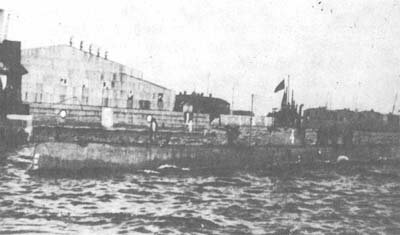
In the boat sounded the alarm signal. Submarine "Panther" came closer to the island, and then turned left almost 90 degrees. At this time, the sun went down to the northwest beyond the horizon, spreading a golden-orange sparkling path across the water. It blinded the eyes of signalmen on British ships, making it difficult to detect the periscope. In addition, the submarine was moving closer to the enemy destroyers from the side of the island, from where it was least expected. This allowed her after the attack on the shallow water reach (15 - 25 meters) to quickly move toward greater depths.
The watch was carried on horizontal rudders by an excellent specialist F. M. Smolnikov, by the instruments of control by torpedo firing - by an experienced machine driver F. V. Sakun. Commissioner "Panther" VG Ivanov went to the bow of the boat. In the stern was boatswain DS Kuzminsky, who headed the party organization "Panthers". The clock showed 21.05. The commander ordered to open the front covers of the torpedo tubes. After 11 minutes, a new team followed: "Nose machines - come on!" Until the British ships remained no more than 4 - 5 cable. In 21.19, A.N. Bakhtin commanded: "The right unit is a fan!" Half a minute later, the Panther fired a shot from the left torpedo tube. Commander, clinging to the periscope, saw two air bubbles splashed out from under the water - torpedoes rushed at the enemy. Lightweight after the torpedo salvo "Panther" thrown to the surface. "All loose in the nose!" - commanded the assistant commander AG Shishkin. Sailors rushed to the bow of the submarine. At the same time, a nasal trim tank was filled with water. "Panther" quickly went to the dive. After a few seconds, a strong explosion was heard. But the submariners could not see how a pillar of fire, water and smoke shot up from the side of the British destroyer - the periscope had already been lowered. Artillery volleys crashed. “Panther”, sharply changing course, hurried to leave the area of attack. She walked, almost touching the bottom of the ground. And the depth increased very slowly - 18 ... 20 ... 25 m. Behind the stern, artillery shots were still heard.
"Panther" went farther and farther to the east. New day has come.
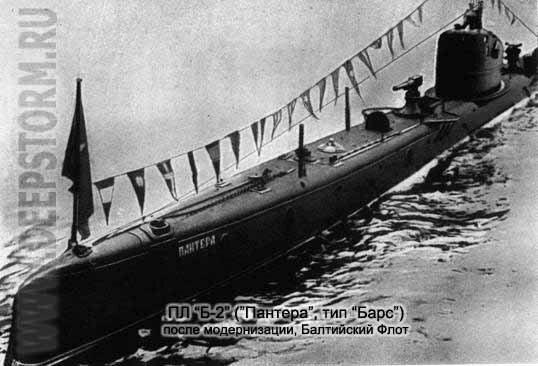
September 1 in the Panther 01.10 PL surfaced. The commander opened the hatch and went up to the bridge with the commissioner. The night was dark. When they began to ventilate the boat, a searchlight flashed in the area of Cescar. Its bright beam slid across the water, approaching the Panther. Submarine quickly plunged and lay on the ground at a depth of 30 meters.
In 05.45, the Panther floated to periscope depth. In 06.30 the Shepelevsky lighthouse appeared. Having defined, "Panther" went to Kronstadt. The lighthouse had barely passed, the commander noticed the periscope of an unknown submarine. But soon the periscope disappeared. Apparently, the submarine, finding a "panther", chose to go to the depths. When the “Panther” was already laying down on the approach line, there was a rattle — on the left side it touched either the miner, or the nautical milestone cut off after the 1918 campaign. The submarine commander reported that this incident occurred on the beam of the Tolbukhina lighthouse when the submarine was under water. The 11.20 "Panther" has surfaced. A gloomy mist hung over the sea. On the left, the silhouette of the Tolbukhina lighthouse differed. Breaking away from the enemy, the Panther submarine stayed under water for 28 hours and passed 75 miles. In those days it was a record. The pressure inside the submarine increased so much that the barometer needle went out of scale (above 815 mm). The battery was almost completely discharged. In 13.00, the Panther was moored in the Kronstadt harbor.
The torpedo strike of the Panther submarine was successful - the newest, launched only in 1917, into the water, the destroyer of the British fleet "Victory" with a displacement of 1367 t went to the bottom. For valor shown in this campaign, the commander of the submarine "Panther" A.N. Bakhtin was subsequently awarded the highest at that time government award - the Order of the Red Banner. The Revolutionary Military Council of the Baltic Fleet, by its decree of 3 December 1919, awarded the sailors of the submarine Panther 18 nominal watches. The combat account of the Soviet submariners was opened, which was then continued and multiplied many times in battles against Germany during the Second World War. The heroic campaign of the submarine "Panther" was the last combat exit to the sea of the submarines of the Baltic Fleet during the years of the Civil War and foreign military intervention.
By 1921, the Soviet Republic, except for the Baltic Fleet, had almost no naval forces in the Black Sea, in the North and the Far East. Submarines were only in the Baltic, in the Black and Caspian Seas.
The Arctic Ocean flotilla was plundered by US-British interventionists.
During the Civil War and foreign intervention, the Russian submarine suffered huge losses - 32 PL of various types (61,5% of its number on the eve of the revolution), from the bottom of the 25 PL were destroyed or captured by the interventionists and White Guards.
By the end of the Civil War, the submarine fleet of Soviet Russia numbered only 23 submarines of the Kasatka, Minoga, Morzh, Bars and AG types. Of these, the 10 PL (9 PL of Bars type and one of AG type) were in service, 6 PL in construction, assembly and overhaul, in a reserve, 7 PL.
The RKKF consisted of only one underwater compound - the submarine division of the Baltic Sea (the division head was a military sailor Ya.K.Zubarev, the commissar was a former machine foreman of the Unicorn and Leopard submarines MF Storozhenko). The connection included the 3 Division.
In the first division included the submarine "Panther", "Leopard", "Wolf", "Tour" and the floating base "Tosno".
In the second division - the submarine "Lynx", "Tiger", "Jaguar", "Ersh", "Snake", mother ship "Warrior" and training ship "loyal."
Submarine "Vepr", "Cougar" and "Eel" were reserve division.
In addition, the division had a rescue ship "Volkhov". Almost all the ships of the compound were based on Petrograd. The division during the Civil War lost 13 PL. She experienced an acute shortage of command personnel. Submarine mechanisms and weapons were worn to the limit. The vast majority of ships needed major repairs. Their condition can be judged by the following fact: March 27 1920 on the Neva submarine sank. In winter, ice supported it afloat, which melted under the rays of the spring sun, and the boat went to the bottom.
In October, 1920, for the first time after the Civil War, 5 PL submarined in the Gulf of Finland together 6-day campaign under the flag of the division commander. On November 28, the Baltic submariners solemnly celebrated the holiday of their union. A parade of submarines took place on the Neva with a huge crowd of people, and one of them, the Tour, plunged and passed along the river under a periscope.
In May, the submarine division of the Baltic Fleet was reorganized into a separate division, which included two groups of ships: one included the 1922 submarine and the Tosno transport, the other the 5 submarine and the Verny and Volkhov ships. The naval base "Warrior", the 4 submarine of the reserve battalion, as well as the unfinished submarine "Yaz" and "Trout" were withdrawn from the operational force of the Naval Forces of the Baltic Sea. 3 June 13 Propulsion "Vepr" and "Cougar" were handed over to the diving school, created instead of the diving training squadron.
The organization of service for the new states was being adjusted, the statutory order on ships was being strengthened. Combat training was hampered by the duration of repairs and the late entry of the submarine into the campaign.
Torpedo shootingNUMX were able to perform only 1922 PL (in the division there was only one set of torpedoes, which the ships passed to each other). Nevertheless, 4 PL took part in the march of the ships of the Baltic Fleet before the Reval meridian, which were first conducted after the end of the Civil War.
Much work was done to summarize the combat experience of using the submarines in the First and in the Civil Wars. In 1920, on the Baltic, Rules for service on submarines were developed. "20 on April 1922, Mr. J. Z. Zubarev, reported to the Chief of Staff of the Naval Forces of the Baltic Sea:" The division personnel work was first released, embracing all the information and instructions on underwater specialty ". A. Bakhtin, A. Berg, G.V. Vasilyev, B.M. Voroshilin, N.N.Golovachev, A.A.Zhadn-Pushkin, N.A. took an active part in the development of these rules. .Zhimarinsky, N.A. Zhukov, N.A. Ignatov, A.A.Ikonnikov, A.N. Lebedev, N.A.Petrov, V.A. Pödneri, V.N.Selyanin, G.M.Trusov and other submarine commanders.
22 November 1922 on the day of the division's holiday 59 Baltic submariners received special services for the restoration of the Soviet submarine fleet of the “Heroes of Labor of the submarine division of the Baltic Sea” certificates.
By order of the RVS of the Baltic Sea Forces of 17 in January, 1923 of the submarine of the division were assigned new names: Bolshevik (Lynx), Commissar (Panther), Red Army (Leopard), Worker ( "Ruff"), "Krasnoflotets" ("Jaguar"), "Kommunar" ("Tiger"), "Comrade" ("Tour"), "Proletarian" ("Snake"). The submarine "Wolf" was mistakenly missed in the order and received a new name "The Handy Man" a little later.
The Tosno transport was renamed the Smolny floating base, the Verny training ship, the Petrosoviet floating base (later the Leningrad Soviet), and the Volkhov lifeguard, the Commune.
By the beginning of 1925, a separate division of the submarine was transformed into a two-division brigade. This team was commanded by Y. K. Zubarev, the commissar was (since October 1926) O. Spalvin, the submarine divisions were headed by A. A. Ikonnikov and G. V. Vasiliev.
In 1925, the brigade joined the entire campaign for the first time — all of the 9 SPs were in service. This was facilitated by the active participation of submariners in the repair of their ships: they completed more than 50% of repair work. In 1924, new batteries were installed on almost all submarines. The crews submarine aggressively increased their combat training.
In the 1928 campaign, the duration of the Baltic Sea Submarine training trips increased to 53 days, and the duration of continuous stay on the ground - to 43 hours. The greatest immersion depth was 125 meters. The brigade ships made an 2 voyage to the southern part of the Baltic Sea, practicing communications.
In the Black Sea submarine forces, in essence, were created anew. Almost the entire submarine brigade of 19 units, which the Russian fleet had on the Black Sea in 1917, was destroyed by the interventionists and the White Guards. In Odessa, they flooded the submarine "Swan" and "Pelican". In the area of Sevastopol, the British flooded 11 PL: "Salmon", "Sudak", "Sperm Whale", "Whale", "Narval", "Gagara", "Orlan", "Skat", "Burbot", "AG-21" and The world's first underwater mine layer "Crab".
The troops of Baron Wrangel took away the ships they captured in Bizerte (Tunisia) 157, including the submarines Ag-22, Seal, Burevestnik and Duck.
Shipbuilding and ship repairing factories in Nikolaev and Odessa were restored. At the plant "Rassud" the cases and mechanisms of the two submarines of the "AG" type - "AG-23" were preserved on the stocks almost in full readiness (1917 was laid in May), the submarine "AG-24" was assembled. Details of two more submarines continued to lie unpacked in the boxes in which they arrived in Russia from the United States.
It also stood on the submarine submarine "Nerpa" - the only remaining in the Black Sea submarine type "Walrus", which was supposed to undergo a major overhaul.
In addition, in the North Bay of Sevastopol, the British submerged the Karp submarine (type K) submerged, excluded 28 March 1917 from the lists of the Black Sea Fleet. Subsequently, between 1926 and 1935, the submarines Orlan, AG-21, Sudak, Burbot, Salmon, Whale and Crab were raised. However, only the AH-21 submarine was able to restore and put into operation.
The formation of the submarine battalion was headed by A.A. Ikonnikov, who arrived from the Baltic in Nikolaev in April 1920. Communist V.Ye. Golubovsky was appointed commissar of the battalion, bringing out the mine foreman of the submarine Minoga. At the submarine "AG-23" a part-cell was created, which played a large role in accelerating the work.
1 June 1923 was launched by the submarine "AG-23". On the same day, the submarine "AG-24" named after Lunacharsky was laid. A month later, construction began on the submarine "AG-25". Work on the submarine were in full swing, but there were not enough specialists. Therefore, by decision of the Soviet government in the Caspian, the submarines arrived in 1918 - 1919. , were transferred to the reserve. 12 people were left to serve them, the rest of the submariners left for the Black Sea.
On September 17, the Caspians, headed by the head of the division Yu.V.Puare, arrived in Nikolaev. Eight people were assigned to the crew of the submarine "AG-23", the rest were painted on the submarines under construction.
September 22 1920. On the submarine "AG-23" a naval flag was raised. She became the first Soviet submarine in the Maritime Forces of the Black and Azov Seas.
By October 21, the formation of the submarine submarine division was completed.
October 4 The X-NUMX of the AG-1923 submarine under the command of A.A. Ikonnikova launched her first combat campaign. The appearance of the Soviet submarine in the north-western part of the Black Sea seriously alarmed the British government. Another 23 September 26, the British ships were given the order to attack her at a meeting with the submarine "AG-1920".
At the end of October, the Chairman of the All-Russian Central Executive Committee M.I. Kalinin visited 1920 of the AG-23 PL in Odessa. October 28. The Red Army units 1920 launched an offensive and broke into the Crimea. 15 November was taken Sevastopol. In November, all the troops of General Wrangel from the Crimea were driven out. At this time, the fourth submarine was laid - "AG-26" named after Kamenev.
16 July 1921 was raised by the Soviet naval flag on the submarine "AG-24", 27 May 1922, on the submarine "AG-25", and a week later, 3 June 1922, on the submarine "Nerpa". 11 July 1923. The submarine division "AG-26" was commissioned.
Georgy "was renamed" Berezan ". The submarines were commanded by B.M. Voroshilin, N.A. Gornyakovsky, A.P.Rakhmin, who arrived from the Baltic, G.A.Shreder, transferred from the Caspian Sea, and others.
The crews of the submarines on 70% consisted of sailors who did not have special underwater training. After the relocation of the submarine submarine division of the Black Sea Fleet to Sevastopol, active combat training began on ships.
The 22 training squad of December 1922 was transformed into the Scuba Diving School. Its first head was SP Yazykov. The school became part of the Baltic Sea Training Unit, organized in January 1922.
16 October 1922 Komsomol took the patronage of the Red Fleet. Almost 89% of the Komsomol members who were drafted into the fleet that year. In March, 1923 was sent to the Diving School by the 130 recruits of the Komsomol recruitment, and in May of the same year - 280.
In 1924, graduates of the Komsomol Recruitment School joined the ranks of the Baltic and Black Sea submariners.
The 14 submarines of the “Bars”, “Walrus” and “AG” types (9 in the Baltic and 5 in the Black Sea) were in the Soviet submarine fleet by the end of the recovery period of the 1921– 1928.
Taking advantage of the difficult situation of Soviet Russia in the 1920s, various foreign firms offered her their submarines. The Italian Ansaldo and Franco Tozigliano, the English Vickers, it seemed, only delivered yesterday Tanks White Guards. The French “Augustin Norman” from Le Havre reported about herself that she is “one of the oldest and most experienced companies specialized in the construction of destroyers and submarines.” Even the Dutch, represented by Fidschenort, expressed their readiness to help the Bolsheviks. Not ardent love for the young state of the workers explained these proposals. The capitalists understood that the USSR was not yet able to create their own submarines, and they were very necessary and, therefore, the Kremlin would have to fork out without bargaining too much. The situation seemed to bode large profits to the western businessmen. But to everyone's surprise, the Kremlin did not want to accept the enslaving offers, was in no hurry to open its arms to Western arms manufacturers.
There were many reasons for this. And a huge role, in particular, played Zarubin, on the table which got Western proposals. Nikolai Aleksandrovich subjected them to deadly criticism. Here is just one document - an analysis of the project of the Franco Tozigliano plant: “Do boats in this proposal represent such great interest and novelty that it is necessary to raise the question of acquiring drawings in the types of Russian acquisition of building rights? Let my answer not be considered chauvinism, but I’ll say no and no. In my opinion, these boats are just the next step after typical boats of the last war. None of the proposed types has been implemented .... For Russia, it is very technically backward from the West and economically very poor, in some cases one has to go in matters of technology not by evolution, but by leaps, especially in the present tense.
The types I have considered for Western European technology are one of the theoretical stages in the development of submarine shipbuilding. Technically, they had higher samples than Russia, we have not yet gone through these stages, and I repeat, we should not take the path of gradual development, but we need to make a leap, sometimes even very large.
The Submarine, as I have already said in my previous reports, passed with the last war a turning point along the path of its development; where this path leads, we still do not know. Every country is trying to find this way in its own way. British, French, Americans, etc. all go their own ways, and their paths are applied to a possible theater and a possible adversary. The same way, i.e. by the national, must go and Russia. The development of Russian type submarines is very peculiar and not similar to a foreign one. It is interesting that the foreign type of submarines, transferred to the Russian soil, is now changing and adapting to the Russian requirements ....
Returning to the report, I will say it again: Russia does not have the means to produce expensive experiments. From the proposed reports it is clear that in general this is all outdated, and the technique of war requires something new. There is nothing exciting about the proposed projects. Main submariner N.Zarubin.
Analyzing the proposal of the Dutch, in September 1923 Zarubin makes the following conclusion: "The tactical tasks of the proposed submarine are very poor: speed, areas, power of machines, etc. - all this is much lower than the minimum requirements we intend to make our future submarine" . This is followed by a refusal by the Italian firm Ansaldo: "Submarine projects do not constitute a novelty."
Zarubin’s opinion was shared by his superiors, forwarding the recall with the following letter by instance: “I completely agree with the opinion expressed in the recall about the need to submit orders to our plants and only as a last resort to transfer the order abroad. At present, there are mass offers for various junk, unnecessary abroad, and therefore we especially need to be attentive and discriminating ... our maritime experts should be watching all this closely. "
"junk" - in this case, a very precise definition. Junk. And Zarubin is one of those who prove this very convincingly.
The case with the construction of submarines is gradually shifting from a dead point of view. As soon as the economy begins to improve, the party takes the maximum possible measures to strengthen the country's defense. New artillery systems, small arms are being developed, the foundations of a tank and aviation industry, the fleet is reborn.
So, the purchase of submarines abroad did not take place. But there is another opinion. Some suggest that the submarine Ivan Grigorievich Bubnov, in particular, the famous for its time, “Leopard”, and copy them, without further ado. Such a point of view has a lot of adherents, since the proposal is, at first glance, a tempting one: without breaking into the open doors of the new and the unknown, it is easier to repeat the old path. And there are drawings, and people who built submarine type "Leopard". The apparent attractiveness of an idea is its danger. Zarubin calls this “hypnosis” “Barsov”, a strong hypnosis, because, apart from Bubnovian submarines, there is nothing in the Baltic. And with the “Bars” is bad. They are in serious condition - let us recall the documents cited above, and, most importantly, they are hopelessly outdated.
In October, 1925 was held autumn campaign of the Baltic Fleet, after him, as expected, the submariners summed up. And in the report it was written: “Regarding the submarine, the hike confirmed once again the low suitability and low value of the Bars-type submarine. Replacing boats with a more suitable type has matured to the full and is another task.”
The resolution of the chief of the Red Sea Naval Forces Commissioner: "More proof that you need to start your own underwater shipbuilding."
Having dealt with foreign proposals, Zarubin is now fighting off Barça, here’s his argument: "Many of the very solid technical authorities of scuba diving from the floating on the submarine are ridiculously hypnotized by the Bars submarine and its mechanisms and any judgment of any proposals and criticism The new mechanism for submarines is not based on modern 1922 technology or 1923, but on the Bars submarine mechanism, i.e. 1912 - 1913, this conservatism sometimes becomes even funny ... The flaws and obsolescence of Barsov are so well known that under A general statement should be considered redundant. The case of Submarine No. 1 (Kommunar (having a 10-year service life) that lost aft horizontal steering wheel in fresh weather is worthy of note. "
Zarubin, of course, is not alone. The report of Konstantin Griboedov, a submarine minelayer “Worker” (the former “Ersh” - from the “Barsov” family), which recorded the misadventures of one campaign, has been preserved. In the report, Griboyedov explains to the submarine brigade commander why he was late to the meeting point: "He was late solely because of the uncoupling of the couplings, and the first one could not be separated before coming to the base ... As for the couplings connecting the electric motors to the crankshaft of a diesel engine, This campaign revealed their final complete unsuitability: It took 3 hours to disengage the left clutch, and the right clutch did not come apart. Urgent immersion and a long underwater stroke revealed the complete unsuitability of shipboard ventilation in mobile communications. I must say that the boat does not have. "
Bad Barca bad. To swim on them is almost impossible. The fate of the old submarines becomes the concern of the Workers 'and Peasants' Inspection. She conducts a scrupulous examination.
Rabkrin's report on its results was held on 4 in August 1925. Among those present were N.A. Zarubin and A.N. Bakhtin, the former commander of the famous Panther submarine, who sank the British Victory destroyer in 1919. Bakhtin’s view of Barsakh has been known for a long time: “The navigation area is small. Life is inconvenient.”
The report of the Rabkrin commission sounds like a sentence to the old boats: "The combat experience of the First World War produced a final leveling in the submarine types. Some of them were swept away at the very first shots and since then they should be considered buried.
These "dead" types are single-hull boats, - between them the type "Bars". The poor qualities of tactical elements of the Bars-type submarine, the major flaws in the type and design of them are negatively solved by the question of the compliance of the Bars-type submarine with the modern requirements of war.
Rabkrin thinks wisely: the boats of the past war are hardly suitable for future wars. And so with the "leopards", paying tribute to the memory of their designer IG Bubnov, we must finish.
The meaning and role of Ivan Grigorievich once and for all determined history Russian shipbuilding: an outstanding theorist and prominent designer, the founder of Russian submarine shipbuilding. Everything that has been done in Russia in this direction before Bubnov is nothing more than experiences, sometimes naive. Ivan Grigorievich gave Russia the first combat-ready submarines of the type that went down in history as the “Russian” - Zarubin wrote with a capital letter, this is how it should be written today. But now, in 1920-ies, there could be no talk of leopards as objects to be copied. Using the same individual successful sites is the business of future designers.
Designers ... People responsible for the defense of the country, and thought about the designers. In the spring of the 1925, the brigade of the submarine of the Baltic Fleet was visited by the People’s Commissar for Military and Naval Affairs M. Frunze. He said that the Central Committee of the CPSU (b) and SNK decided to start building a new fleet, including the submarine. It was supposed to build the first submarines 3 on the Baltic, 2 others - for Black, Boris Mikhailovich Malinin could not have been at the meeting.
COOPERATION WITH GERMANSKY FIRM "DESHIMAG"
AT CONSTRUCTION OF PL TYPE "C"
The first countries with which the Soviet Union established trade and economic ties in the field of military shipbuilding were Germany and Italy. The first trade deal with Germany in the field of shipbuilding was the sale of the Soviet Union for scrap, among other ships, and the three hulls of Izmail combat cruisers, which were of interest to German firms not only as high-quality metal. The Special Technical Commission carefully studied the features of the constructive corps of a new recruitment system for German specialists, in which the experience of building Soviet-class battleships was further developed.
An analysis of the shipbuilding innovations of the Russian battlecruisers turned out to be very valuable for the German shipbuilders when designing and building large-scale warships in the future.
Regular contacts with Germany in the shipbuilding business concerned the supply of German equipment for the Experimental basin in Leningrad to 1926.
Beginning with 1934, the Soviet leadership of the shipbuilding industry and fleet practiced missions abroad to study foreign experience and acquire individual ship projects, their weapons and mechanisms.
During these trips, for example, in France, our specialists got acquainted with the project of the leader of the type "Fantaska". In Switzerland, ordered the main turbine for the battleship project "23". The purchase of a number of auxiliary mechanisms for this battleship, as well as for the heavy cruiser of the 69 project and the destroyers of the 7 project, was carried out in the UK.
Cooperation with the German company Deshimag, which developed the draft submarine with a displacement of 828 / 1068,7 t according to the technical specifications of the Central Design Bureau for Shipbuilding (TsKBS-2), turned out to be fruitful.
In the spring of 1934, a complete set of drawings of the new project was made available to Leningrad designers, and on December 25, the heading of the submarine of the IX series took place. She received the numerical designation "H-1". Launched in August 1935, this submarine already a year later was presented to the acceptance tests of a state commission chaired by NI Kyun’s military engineer 2.
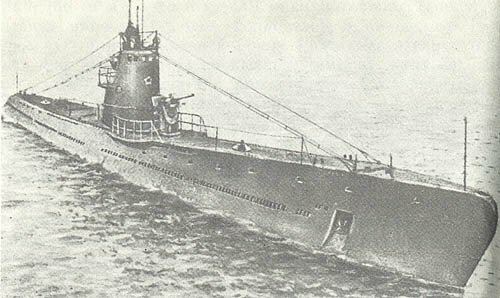
According to the drawings of the German company "Deshimag" were built 3 PL "C-1", "C-2" and "C-3" (series IX). The change from "Н2 to" С "occurred in December 1937.
Since January, 1936 has begun construction of the submarine IX-bis on their basis.
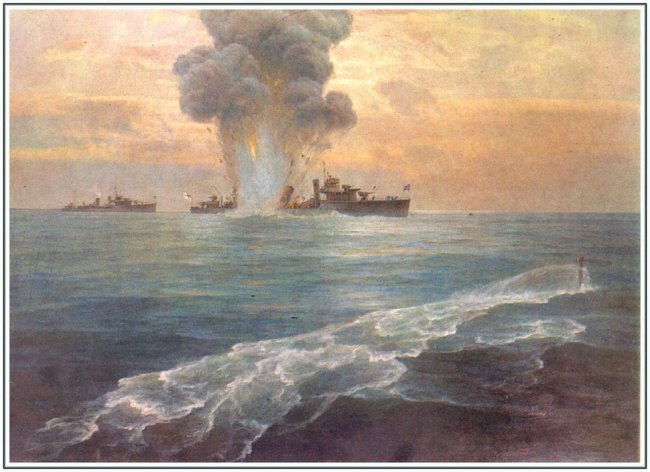
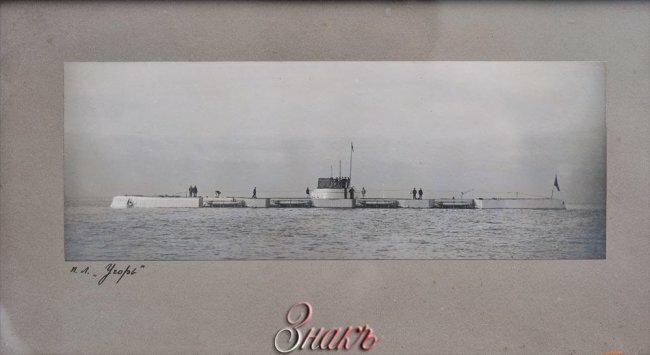
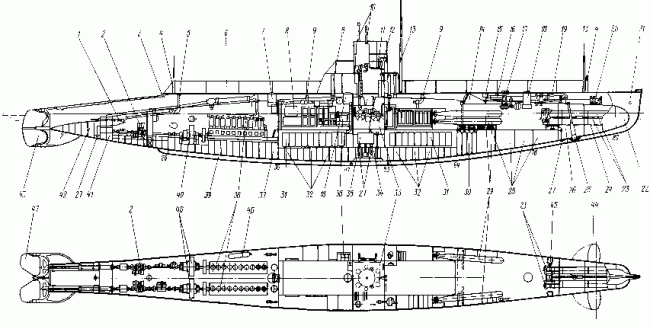
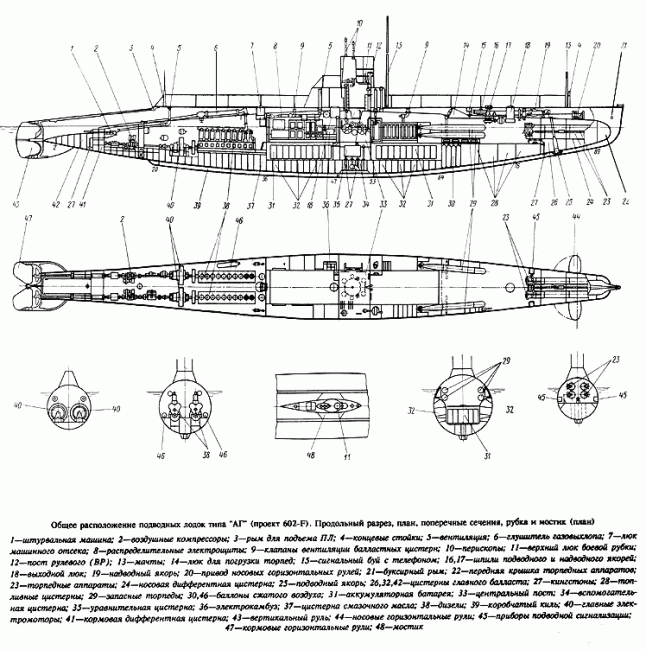
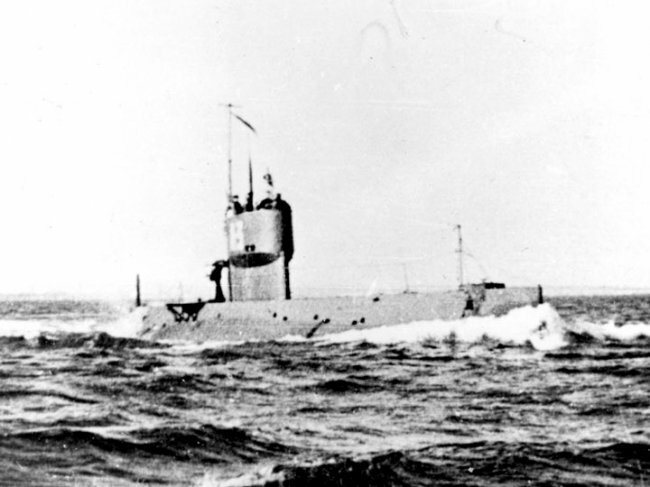
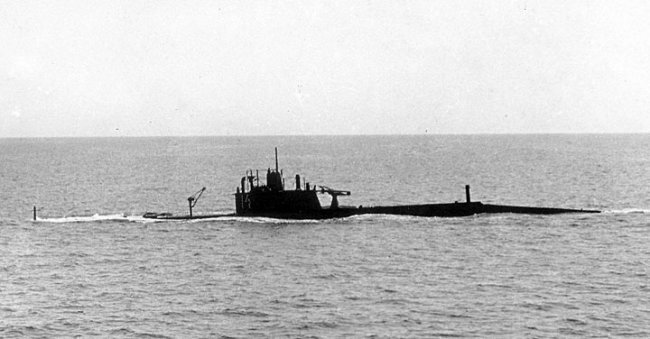
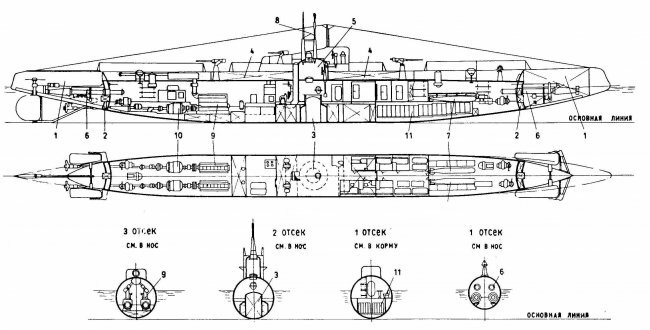
Information